4-2 线程安全性-原子性-atomic-2
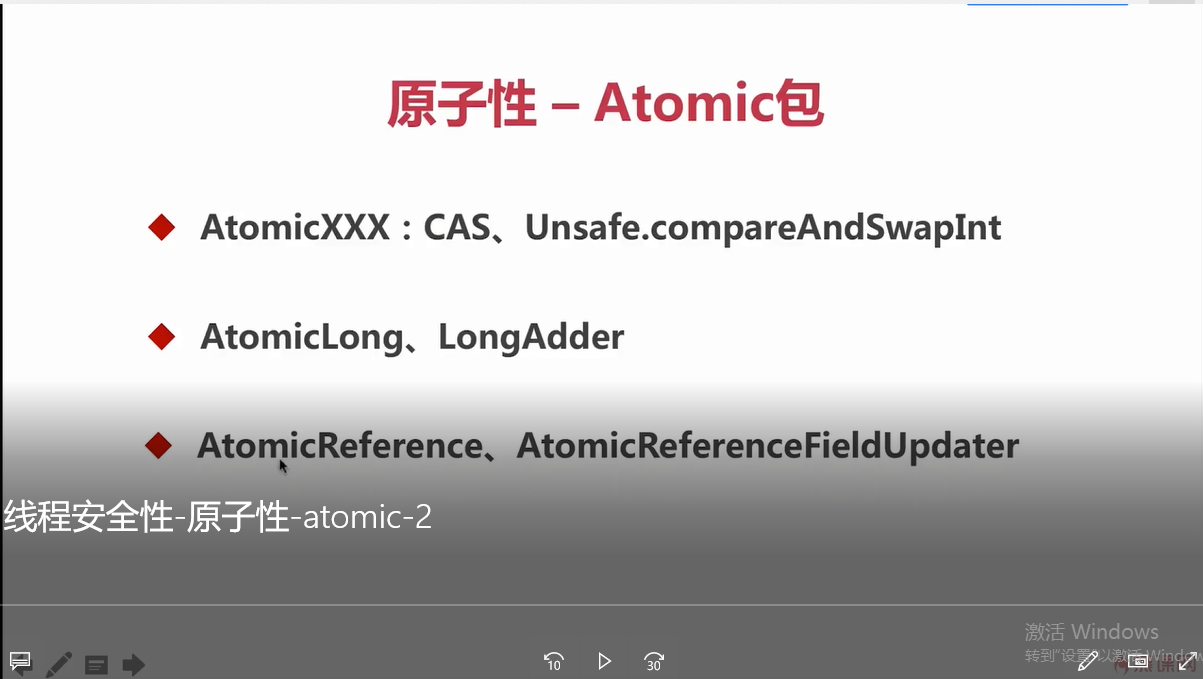
AtomicReference和AtomicLong、AtomicInteger很像,方法也基本上是一样的,然后我们通过引用Integer来做一个简单的例子。
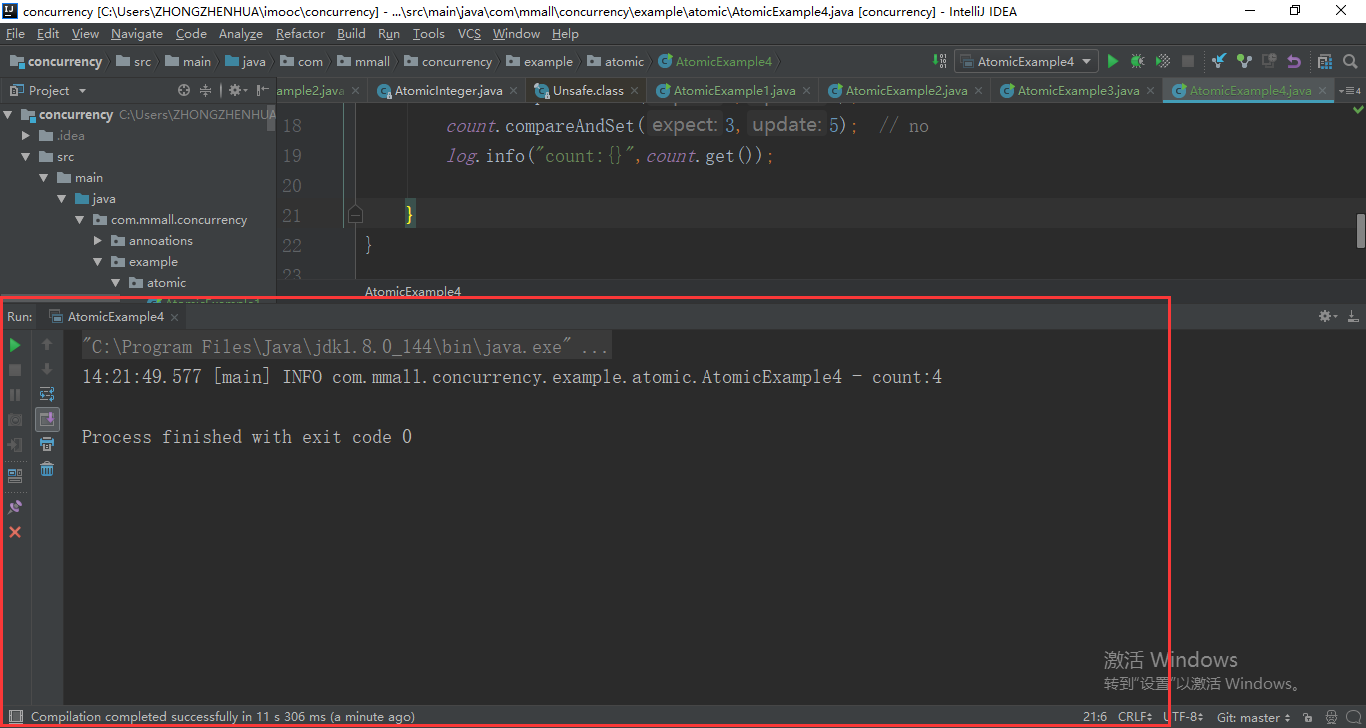
com.mmall.concurrency.example.atomic.AtomicExample4
C:\Users\ZHONGZHENHUA\imooc\concurrency\src\main\java\com\mmall\concurrency\example\atomic\AtomicExample4.java
package com.mmall.concurrency.example.atomic; import com.mmall.concurrency.annoations.ThreadSafe; import lombok.extern.slf4j.Slf4j; import java.util.concurrent.atomic.AtomicReference; @Slf4j @ThreadSafe public class AtomicExample4 { private static AtomicReference<Integer> count = new AtomicReference<>(0); public static void main(String args[]){ count.compareAndSet(0,2); // 2 count.compareAndSet(0,1); // no count.compareAndSet(1,3); // no count.compareAndSet(2,4); // 4 count.compareAndSet(3,5); // no log.info("count:{}",count.get()); } }
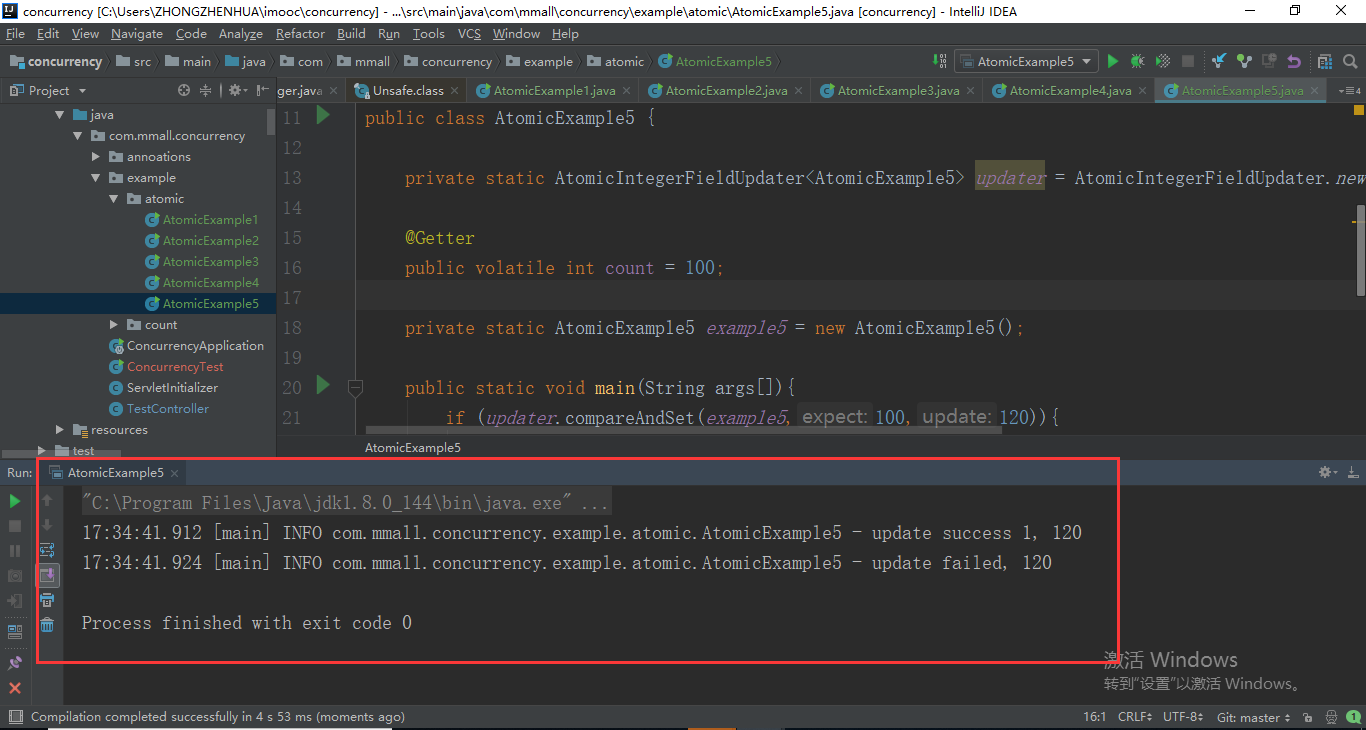 AtomicIntegerFieldUpdater的核心是想原子性去更新某一个类的一个实例,就是我们这里说的example5,选定的某一个字段count,这个count值必须要求是通过特殊关键字修饰才可以,这个类的本质上就是干这个事情的,是原子性的修改。如果当前的这个变量example5对应的这个字段count,expect和update其实是id的版本支持的。如果我这里面传入的值是一个普通的数值,而不是定义好的一个常量值的时候,它就会告诉我当前这个变量是什么名称,这与我当前的id有关系,不是什么特殊的配置。AtomicIntegerFieldUpdater它的核心作用是要更新指定的一个类AtomicExample5的某一个字段的值,而这个字段它要求必须是通过volatile修饰同时还不能是static的字段才可以。这是它的要求,必须是有这个volatile以及非static描述的字段才可以。AtomicIntegerFieldUpdater使用的不多。com.mmall.concurrency.example.atomic.AtomicExample5
AtomicIntegerFieldUpdater的核心是想原子性去更新某一个类的一个实例,就是我们这里说的example5,选定的某一个字段count,这个count值必须要求是通过特殊关键字修饰才可以,这个类的本质上就是干这个事情的,是原子性的修改。如果当前的这个变量example5对应的这个字段count,expect和update其实是id的版本支持的。如果我这里面传入的值是一个普通的数值,而不是定义好的一个常量值的时候,它就会告诉我当前这个变量是什么名称,这与我当前的id有关系,不是什么特殊的配置。AtomicIntegerFieldUpdater它的核心作用是要更新指定的一个类AtomicExample5的某一个字段的值,而这个字段它要求必须是通过volatile修饰同时还不能是static的字段才可以。这是它的要求,必须是有这个volatile以及非static描述的字段才可以。AtomicIntegerFieldUpdater使用的不多。com.mmall.concurrency.example.atomic.AtomicExample5
C:\Users\ZHONGZHENHUA\imooc\concurrency\src\main\java\com\mmall\concurrency\example\atomic\AtomicExample5.java
package com.mmall.concurrency.example.atomic; import com.mmall.concurrency.annoations.ThreadSafe; import lombok.Getter; import lombok.extern.slf4j.Slf4j; import java.util.concurrent.atomic.AtomicIntegerFieldUpdater; @Slf4j @ThreadSafe public class AtomicExample5 { private static AtomicIntegerFieldUpdater<AtomicExample5> updater = AtomicIntegerFieldUpdater.newUpdater(AtomicExample5.class,"count"); @Getter public volatile int count = 100; private static AtomicExample5 example5 = new AtomicExample5(); public static void main(String args[]){ if (updater.compareAndSet(example5,100,120)){ log.info("update success 1, {}",example5.getCount()); } if (updater.compareAndSet(example5,100,120)){ log.info("update success 2, {}",example5.getCount()); }else{ log.info("update failed, {}",example5.getCount()); } } }
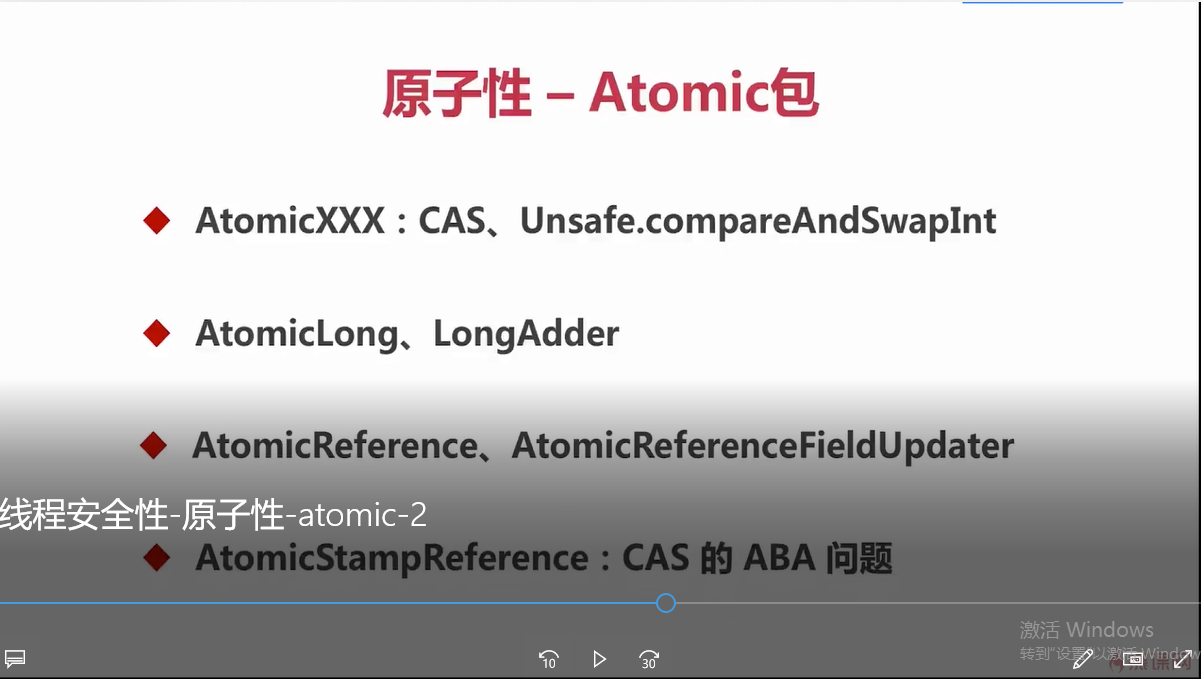
ABA问题它是指在CAS操作的时候,其他线程将变量的值A改成了B,但是又改回了A,本线程使用期望值A与当前变量进行比较的时候,发现A变量没有变,于是CAS就将A值进行了交换操作。这个时候实际上该值已经被其他线程改变过,这与实际思想是不符合的。因此ABA问题的解决思路它是每次变量更新的时候,把变量的版本号加1,那么之前的那个A改成B再改成A,就会变成了A对上1版本,然后改成B变成2版本,再改回A变成3版本。这个时候只要变量被某一个线程修改过,该变量对应的版本号就会发生递增变化,从而解决了ABA问题。
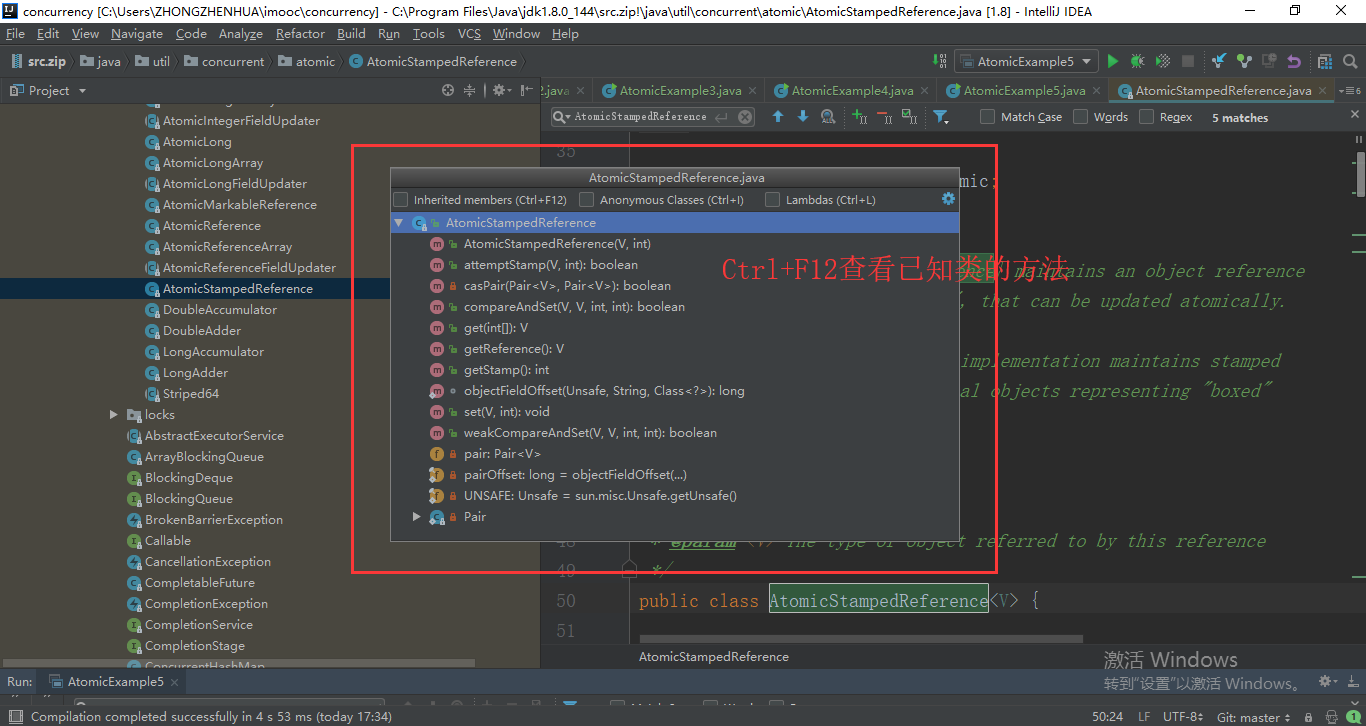
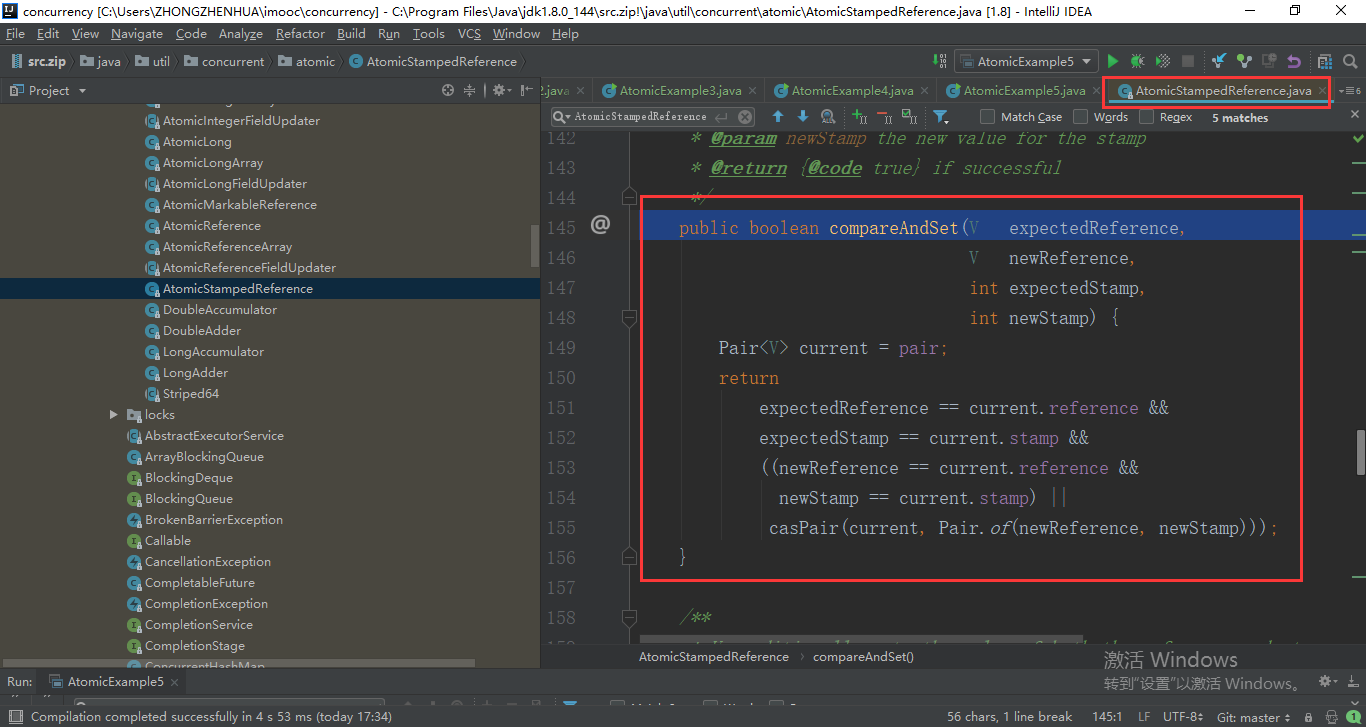
java.util.concurrent.atomic.AtomicStampedReference的核心方法是compareAndSet,这个方法里相对于我们之前的java.util.concurrent.atomic.AtomicBoolean的compareAndSet多了一个stamp的比较。stamp的值是由每次更新的时候来维护的,它的使用和我们之前其他Atomic包里面的其他类的用法很相似。
/** * Atomically sets the value of both the reference and stamp * to the given update values if the * current reference is {@code ==} to the expected reference * and the current stamp is equal to the expected stamp. * * @param expectedReference the expected value of the reference * @param newReference the new value for the reference * @param expectedStamp the expected value of the stamp * @param newStamp the new value for the stamp * @return {@code true} if successful */ public boolean compareAndSet(V expectedReference, V newReference, int expectedStamp, int newStamp) { Pair<V> current = pair; return expectedReference == current.reference && expectedStamp == current.stamp && ((newReference == current.reference && newStamp == current.stamp) || casPair(current, Pair.of(newReference, newStamp))); }
java.util.concurrent.atomic.AtomicLongArray 它维护的是一个数组,这个数组我们可以选择性地更新某一个索引对应的值,也是进行原子性操作的。相比于AtomicLong和AtomicInteger它们的方法,它的方法会额外多一个索引值让我们去更新。getAndSet,取出这个索引更新一个值。compareAndSet也是,它这里面相当于举了一个实例之后呢,传入对应是哪个索引的值,告诉我期望是哪个值,更新成哪个值。
java.util.concurrent.atomic.AtomicBoolean的compareAndSet在实际中还是很实用的。
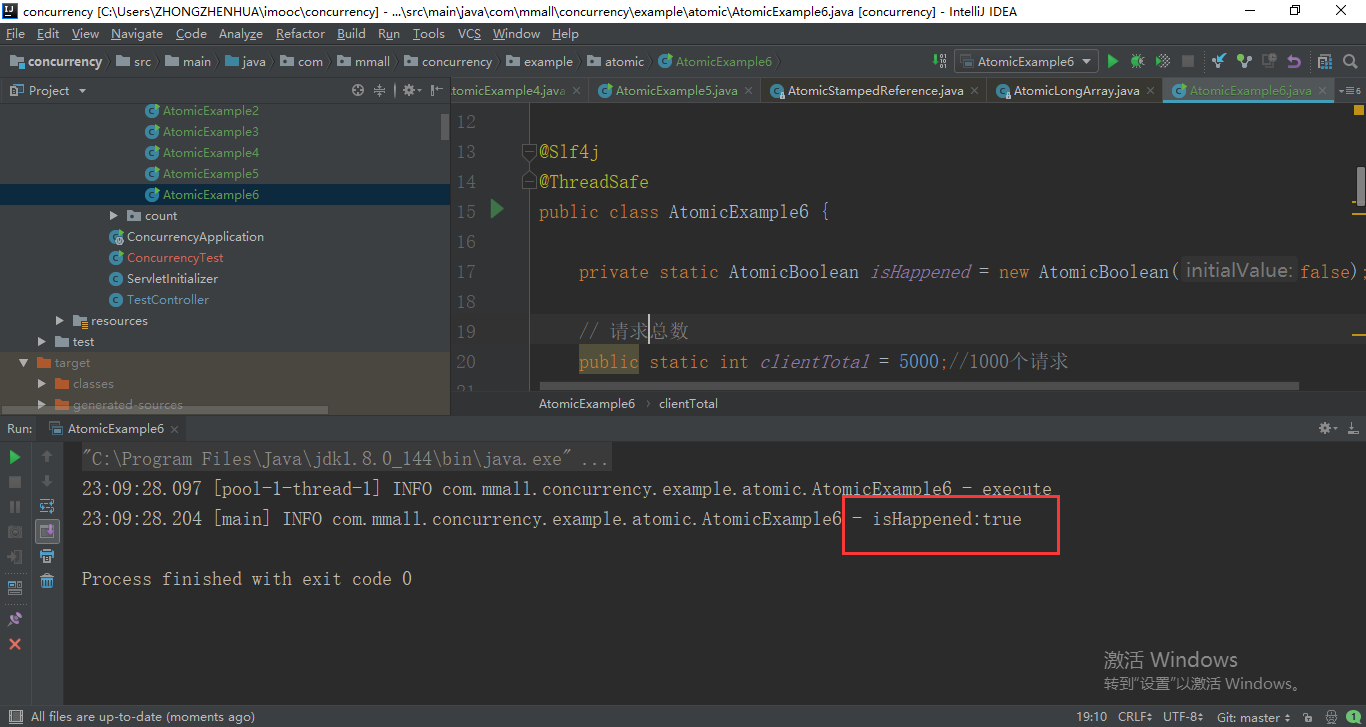


因为它的原子性操作,它可以保证从false变成true只会执行一次,之后的所有4999次,在主要这个函数if(isHappened.compareAndSet(false,true)){判断的时候呢,都是因为它是true没法执行这个动作因此都不会执行。当前这个例子演示了我们如何让某一段代码只执行一次,绝对不会重复,在实际中有的时候会遇到有些流程你只希望某一段代码只执行过一遍就可以参考这个例子来去处理它。
com.mmall.concurrency.example.atomic.AtomicExample6
C:\Users\ZHONGZHENHUA\imooc\concurrency\src\main\java\com\mmall\concurrency\example\atomic\AtomicExample6.java
package com.mmall.concurrency.example.atomic; import com.mmall.concurrency.annoations.ThreadSafe; import lombok.extern.slf4j.Slf4j; import java.util.concurrent.CountDownLatch; import java.util.concurrent.ExecutorService; import java.util.concurrent.Executors; import java.util.concurrent.Semaphore; import java.util.concurrent.atomic.AtomicBoolean; @Slf4j @ThreadSafe public class AtomicExample6 { private static AtomicBoolean isHappened = new AtomicBoolean(false); // 请求总数 public static int clientTotal = 5000;//1000个请求 // 同时并发执行的线程数 public static int threadTotal = 200;//允许并发的线程数是50 //public static AtomicBoolean count = new AtomicBoolean(false); public static void main(String args[]) throws Exception{ ExecutorService executorService = Executors.newCachedThreadPool(); final Semaphore semaphore = new Semaphore(threadTotal); final CountDownLatch countDownLatch = new CountDownLatch(clientTotal); for (int i = 0; i < clientTotal; i++) { executorService.execute(()-> { try { semaphore.acquire(); //add(); test(); semaphore.release(); } catch (Exception e) { log.error("exception",e); } countDownLatch.countDown(); }); } countDownLatch.await(); executorService.shutdown(); //log.info("count:{}",count); //log.info("count:{}",count.get()); log.info("isHappened:{}",isHappened.get()); } public static void test(){ if(isHappened.compareAndSet(false,true)){ log.info("execute"); } } }
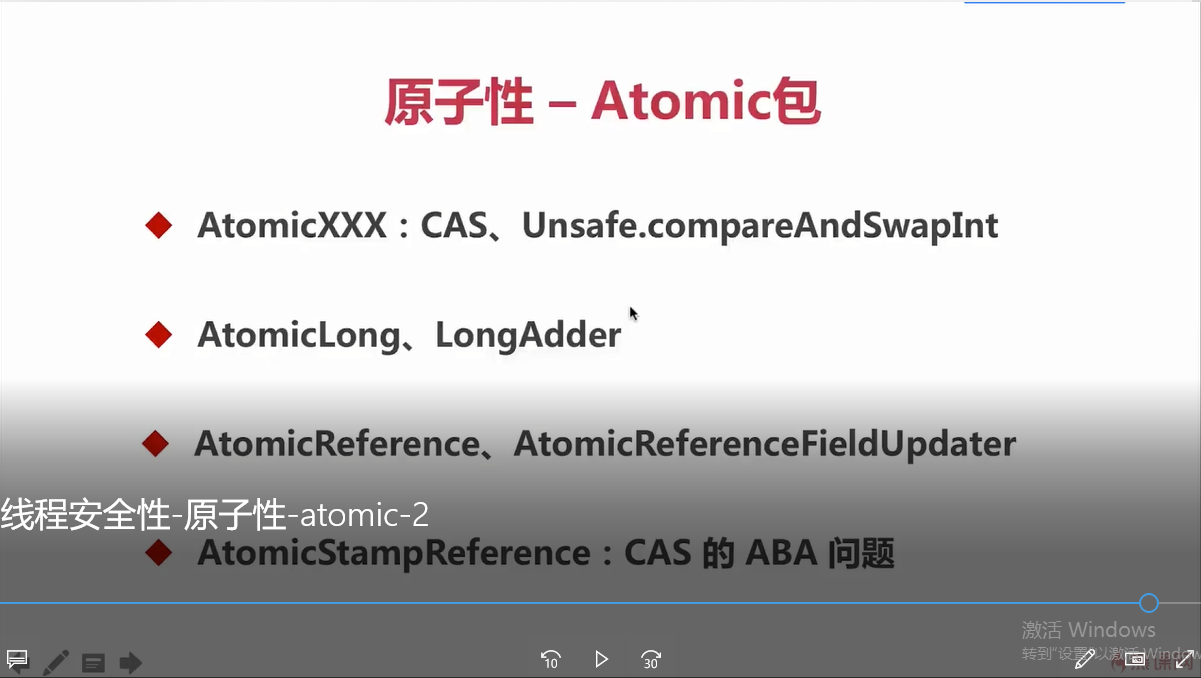
使用Atomic包下面的AtomicInteger的类可以实现线程安全,在这个基础之上呢跟大家说明了CAS原理,以及实现的时候借助于UnSafe的compareAndSwapInt这个方法。AtomicLong和LongAdder这两个类的使用以及它们的对比,它们的优势和缺点。AtomicReference和AtomicReferenceUpdater两个类的使用。AtomicStampReference来解决掉CAS的ABA问题。AtomicLongArray这个类的使用,AtomicBoolean的compareAndSet方法在实际中的应用。





